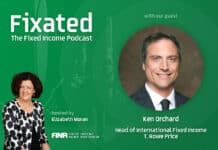
The Australian Prudential Regulation Authority’s (APRA) decision to phase out $44 billion worth of additional Tier 1 (AT1) bank hybrids by March 2032 will mark the end of a product income-focused Australian Securities Exchange (ASX) investors have largely embraced.
While many will remember the hybrids era fondly, Simon Dawkins, Partner and Head of Capital Markets and Fixed Income at Escala Partners, says there’s an even better option in plain sight for those who qualify as wholesale or sophisticated investors.
“With AT1 hybrids set to disappear, many investors will need to rethink how they generate income from this part of their portfolio,” Dawkins says. “For eligible investors, high-quality, investment-grade Australian floating-rate notes (FRNs) available in the wholesale over-the-counter (OTC) bond market are not just a substitute for hybrids but a more superior proposition.”
To be considered a sophisticated investor, an individual must have a gross annual income of at least $250,000 for the past two years or net assets of at least $2.5 million. Through Escala’s managed discretionary account (MDA), these investors can access a curated portfolio of direct fixed-income securities traded in the wholesale market under information memorandums rather than retail prospectuses.
The MDA portfolio typically holds senior debt, subordinated debt, covered bonds, mortgage-backed securities supported by residential or commercial property loans and corporate bonds issued by Australian and global companies.
Also read: Challenger IM LiFTS Meet Growing Demand for Private Credit
While most securities are issued in the Australian wholesale market, some are structured under US SEC Regulation S, making them available globally but not to US buyers. Dawkins notes the portfolio may also include kangaroo bonds, issued in Australian dollars by offshore entities, and, from time to time, selected hybrids.
The appeal of this market lies in its scale and liquidity. “The Australian OTC bond market trades $3–4 billion a day on average. In normal market conditions, transactions settle in T+2, meaning clients can have cash in hand within three business days. That’s a stark contrast to the ASX hybrid market, where selling a substantial holding can take days or even weeks,” Dawkins says.
This liquidity advantage also addresses frustrations with term deposits (TDs), which became harder to break after the GFC due to APRA rules designed to protect bank funding stability. “Many investors don’t want their capital locked away. If you’ve just sold a property and have a tax bill in a few months, the penalties for breaking a TD make it unviable. An OTC bond portfolio offers the yield you need and the liquidity to access funds quickly,” Dawkins explains.
While OTC bonds don’t carry franking credits, Dawkins says the trade-off is worth it. “With investment-grade FRNs, capital prices are relatively stable and the downside risk is minimal – you receive your coupon payments and principal back at maturity. By contrast, hybrids can be forcibly converted to equity, often at the worst possible time, and their capital value can swing more sharply.”
“This is about embracing a better investment that’s been hiding in plain sight. The OTC bond market makes perfect sense as an asset allocation tool, as an income strategy, and as a liquidity strategy.”

































